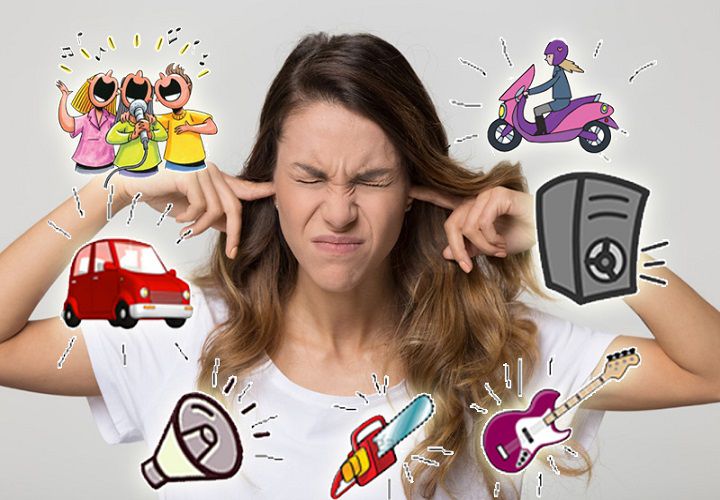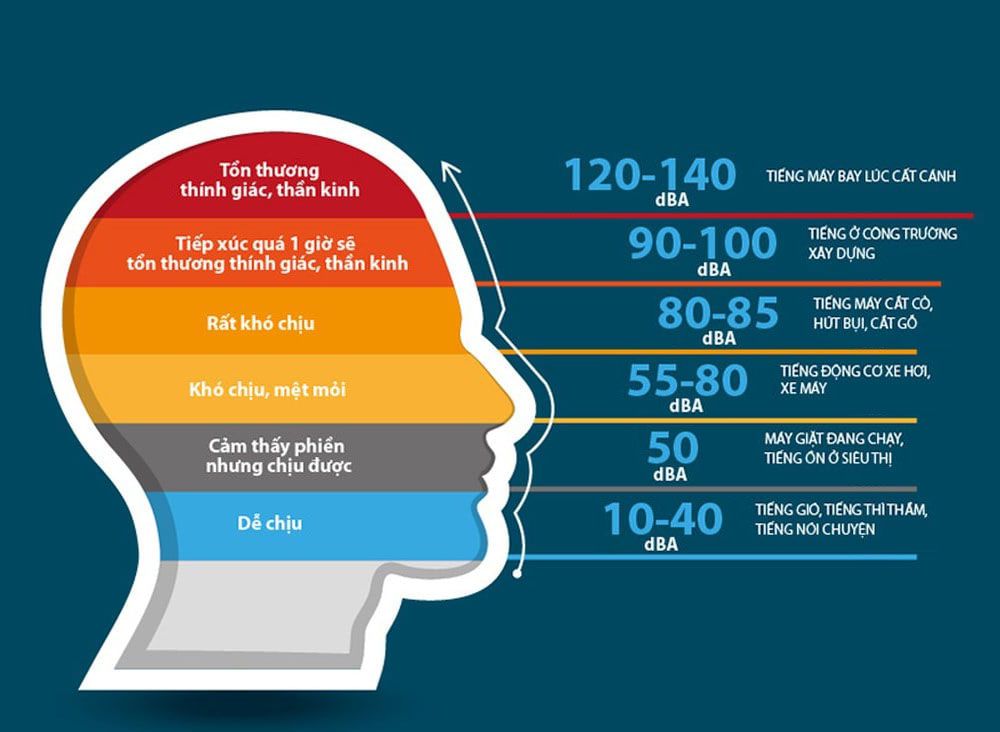Noise pollution with causes, impacts and solutions to reduce it
Noise is gradually becoming a worrying problem in urban areas and industrial zones. Noise pollution affects physical health and reduces the quality of life. In this article, EMIN will help you learn about the definition, causes, negative impacts and practical solutions to limit noise pollution in Vietnam.
Contents
What is noise pollution?
Noise pollution is a phenomenon in which the environment is affected by high-intensity sounds that exceed the permissible threshold, causing negative effects on humans and living creatures. These sounds often originate from means of transport, construction activities, factories or industrial equipment.

Unlike dust or waste, noise is an invisible factor but the consequences are very obvious. When the sound exceeds 70 dB, it is considered a form of environmental pollution.
According to data from the Ministry of Natural Resources and Environment, many major roads in Hanoi and Ho Chi Minh City have noise levels 5 to 15 dB higher than the allowable limit at peak times. Areas near construction sites, factories or bus stations often record noise levels above 85 dB - a dangerous level if exposed for a long time.
The World Health Organization (WHO) also conducted a survey showing that Vietnam is among the countries with rapid urbanization, leading to increasing noise pollution in the past 10 years.
Causes of noise pollution
Noise pollution is caused by many factors, both natural and man-made. Some common sources include:
Urban traffic is one of the main causes. The continuous and intense noise from motorbikes, cars, trucks or trains, especially in areas with high traffic volume, creates a high noise level.
Construction activities in residential areas such as drilling, cutting, material transport vehicles... taking place continuously throughout the day often create prolonged noise, directly affecting the surrounding residents.
In the industrial sector, noise emitted from heavy machinery in factories and processing zones is also a serious source of noise pollution.
In addition, cultural activities such as karaoke singing, sounds from wedding events or festivals in residential areas also contribute to increasing noise levels.
Negative impacts of noise on health and environment
Noise is not just a temporary annoyance but can lead to many serious consequences. In terms of health, frequent exposure to noise can affect hearing, cause insomnia, increase stress levels and increase the risk of cardiovascular diseases. The ability to concentrate is also significantly reduced, especially for children and people who do mental work.

In terms of the environment, artificial sounds cause many animals to change their natural behavior or lose their migration orientation, causing ecosystem disruption. As for humans, living in a noisy space makes the body tired, makes it difficult to rest and leads to a decline in the quality of life as well as social relationships.
Solutions to limit noise pollution
Personal solutions
For those who work in environments with high noise levels such as construction sites or factories, the use of protective equipment such as soundproof headphones, earplugs or specialized noise-canceling tools is essential to protect hearing.
In the living space, you can proactively create a quiet environment by using soundproof glass doors, planting trees around the house and choosing materials that can absorb sound such as thick curtains and carpets.
In addition, limiting the use of loud noise-emitting devices such as vacuum cleaners or blenders at sensitive times also helps reduce noise in residential areas.
Community Solutions

Expanding the area of trees in urban areas not only helps purify the air but also has the ability to absorb and disperse sound, thereby reducing noise in densely populated areas, schools and hospitals.
In addition, a reasonable urban planning should clearly separate residential areas and industrial areas, and install sound barriers on major roads or near airports. Using soundproofing construction materials for housing is also an effective solution.
Regarding traffic, noise can be controlled by installing signs in areas that require quiet, limiting the use of car horns, and improving the quality of road surfaces to reduce the sound generated by vehicles.
Solutions from the government and legal system
State management agencies need to develop and promulgate specific noise level standards appropriate for each area such as residential areas, public areas or industrial zones, in order to create a clear legal basis for handling violations.
Along with that, inspection and punishment of establishments or individuals causing noise exceeding the permitted level should be carried out regularly and seriously to create deterrence.
Finally, it is advisable to invest in noise monitoring technology using automated measuring devices, which will help detect and handle violations more quickly and effectively.
Related article: Improve sleep quality with ideal bedroom noise standards
Noise measuring devices are commonly used today.
The use of sound level meters is becoming increasingly necessary to control and evaluate noise pollution. Here are some devices that are trusted by many individuals and organizations:
The Tenmars TM-101 sound level meter is a suitable choice for home or office users thanks to its easy-to-use design and reasonable price.
The Extech 407730 stands out with its ability to measure in a wide range and display results clearly via the LCD screen.
LUTRON SL-4013 is compact in size, convenient for carrying and using at field inspection works.
The application of measuring devices helps users accurately grasp the noise level, thereby serving the monitoring, reflection and compliance with related regulations.
Noise is a factor that has a direct impact on health and daily life. Early identification and proactive use of specialized measuring devices are important steps in controlling and preventing the consequences caused by noise pollution.
If you need to buy high quality, easy-to-use and highly accurate noise measuring equipment, please contact EMIN - a reputable distributor of measuring equipment. We are ready to support and advise on solutions that suit your needs.
FAQ – Some frequently asked questions about noise pollution
Is noise pollution punishable?
Yes. When noise levels exceed the permitted limit, individuals or organizations can be fined from several million to hundreds of millions of VND, depending on the severity of the violation and the area where it occurs.
What noise level is considered harmful to health?
Sound with an intensity above 70 dB for a long time is considered harmful. When it exceeds 85 dB and is exposed for a long time, the risk of ear damage and health problems increases.
How can I check the noise in my home?
You can use a handheld sound level meter or install an application on your phone. However, if you want accurate and reliable results, you should use a specialized calibrated device.
How does noise affect children?
Young children are susceptible to noisy environments. Frequent exposure to noise can reduce children's ability to concentrate, disrupt sleep, and affect intellectual development.
Who is most susceptible to noise?
Children, the elderly, patients (especially those with cardiovascular or neurological diseases) and people working in noisy environments are susceptible. They are susceptible to stress, insomnia, hearing loss, and general health problems if exposed to prolonged noise.
